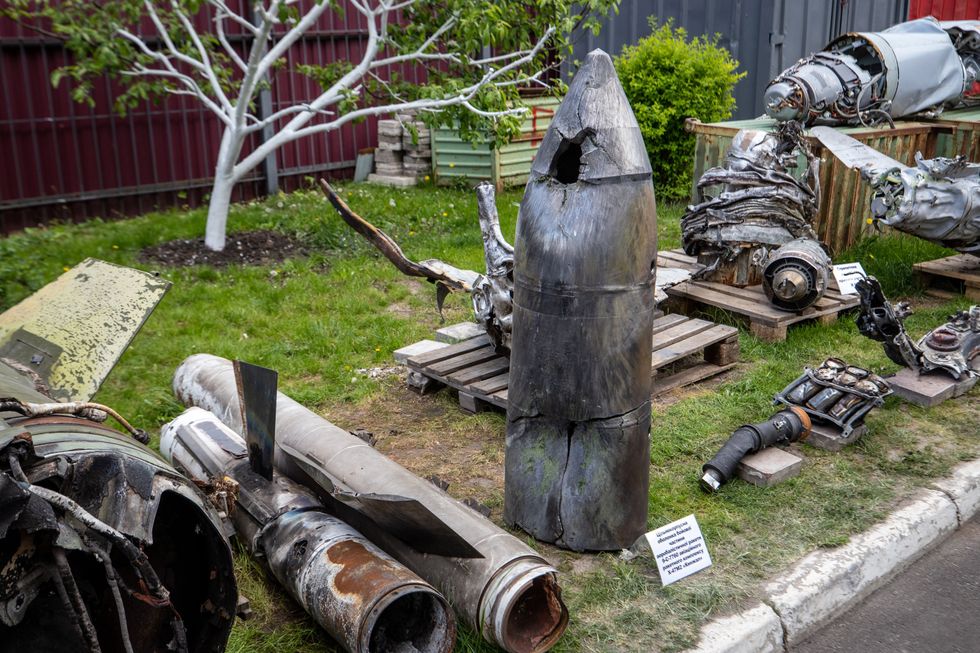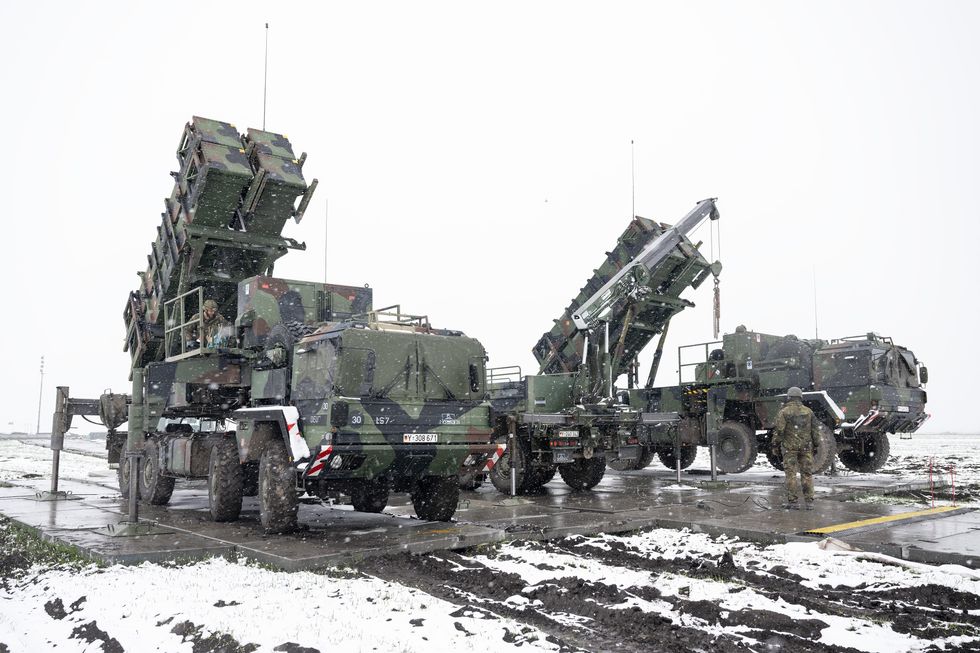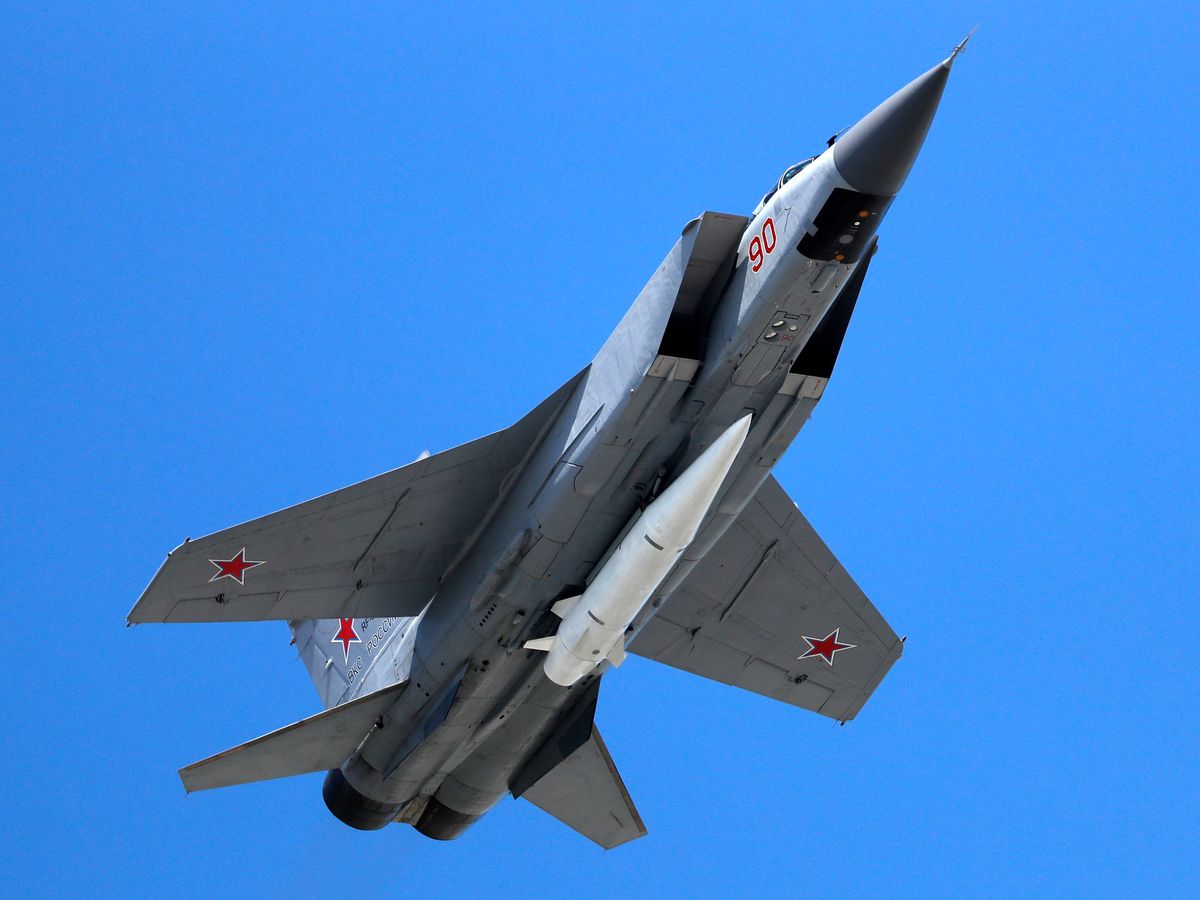The first reported use of a hypersonic weapon in combat was on 18 March 2022, when a Russian Kinzhal missile destroyed an alleged underground weapons depot of the Ukrainian armed forces in Deliatyn. Another such attack came the next day, then more in April and May, and still more eight months later. The largest salvo was fired on 9 March 2023 as part of a barrage that included other missiles and drones.
There is some dispute as to whether the Kinzhal qualifies as a true hypersonic weapon, namely, one that can fly faster than five times the speed of sound (Mach 5) while maintaining the ability to maneuver—a combination of features that supposedly makes the missile immune to existing countermeasures. But just this month the world discovered that the Kinzhal was not immune. It seems, in fact, far from it.
On 6 May Ukrainians shot down a Kinzhal outside Kiev using a Patriot air-defense system, supplied by the United States just weeks before. It was reported that the Kinzhal was specifically targeting that system when it was shot down. Three days later, the Russian military reportedly launched a series of six Kinzhal missiles at Ukrainian sites; the Ukrainians shot down five of the six. The sixth Kinzhal damaged, but did not destroy, a Patriot battery.
The matter is being closely scrutinized not only in Ukraine but throughout the world, because hypersonic missiles now figure prominently in the military calculation of great powers. Over the past five years, China and Russia have introduced them into their arsenals, prompting the United States and other nations to develop their own hypersonic weapons and enhanced air-defense systems to counter this threat. Each move and countermove shaves away the time available for leaders to decide how to respond to a possible nuclear strike. This destabilizes nuclear deterrence, without doubt the cornerstone of military competition.

Hypersonic weapons fall into two main classes: hypersonic glide vehicles (HGVs) and hypersonic cruise missiles (HCMs). HGVs are launched into space, then reenter the atmosphere to glide toward their target; they are used for strategic missions, such as delivering a nuclear warhead against distant targets. HCMs are powered by scramjet or rocket engines throughout their entire flight and are tactical in nature, intended for destroying key enemy targets, such as aircraft carriers. Given their usage and delivery platforms, HGVs typically achieve speeds of about Mach 20 while HCMs reach only Mach 10.
Russia is carefully guarding the secrets of its hypersonic program. Indeed, in April Russian police arrested three scientists for allegedly leaking details of their systems to the Chinese.
Although the Russian hypersonics program has several HBMs and HGVs in development, their arsenal currently only includes one type of each. The Avangard missile is an HGV released from an intercontinental ballistic missile; it reportedly tops out at Mach 27, and it has the mission of delivering a nuclear warhead as part of a strike on an enemy’s intercontinental missile bases and other strategic assets. The Kinzhal missile is deployed from a MiG-31K or Tu-22M3 traveling at Mach 2.7; its rocket engine then kicks it up to Mach 10.
The use of a rocket rather than a scramjet—a technology still in development—means that the missile must carry not just fuel but also oxidant. That extra weight limits the range significantly, although the Russian military claims the Kinzhal can fly 2,000 kilometers. There has been ample criticism of the Kinzhal missile and of its designation as a hypersonic weapon. Indeed, many experts believe that the missile is just a modified variant of the Iskander missile, a ground-based weapon system that has been in the Russian arsenal for decades.
Military analysts can now assess more accurately the capabilities and limitations of this specific weapon. First, the Kinzhal packs a big punch: It weighs approximately 4,300 kilograms, which means that a strike at Mach 10 produces a kinetic energy of around 23,000 megajoules, equivalent to the explosion of 5 tonnes of TNT. Even if the missile is on impact slower than Mach 10, the kinetic energy is still enough to penetrate the shell of most hardened structures so that the warhead can detonate, blowing up a target from the inside. This was perhaps the reason for the use of Kinzhal missiles early in the war for destroying fortified targets.
Second, the class of hypersonic weapons has been touted as being able to skirt conventional air-defense systems. Indeed, this proved true early in the war, when the Ukrainians had no defense. Further, in early 2023 the Russians deployed Kinzhal missiles as part of a large barrage, including traditional missiles and weaponized drones; perhaps the inclusion of the Kinzhals confused or overwhelmed the tracking mechanisms of the air-defense systems, allowing the other missiles to pass through as well.
Even so, the Kinzhals have proved no match for the Patriot air-defense system, whose advanced tracking technology could detect the Kinzhal and guide the Patriot to intercept it. It seems that the Patriot air-defense system is better than had been previously thought.

This does not necessarily mean that a Patriot would do equally well against a hypersonic missile powered by a scramjet rather than a rocket engine. The rocket engine depletes much of its fuel—and oxidant—en route to the target. It therefore slows down. A scramjet, not needing to carry oxidant, might well do better.
Further, despite initial claims that the Kinzhal could maneuver at high speeds, both to evade defenses and to strike with pinpoint accuracy, the missile has shown itself to be fairly inaccurate. Indeed, technologically, it wouldn’t be too hard to modify it to make it faster, at the cost perhaps of some of its range. The real challenge would be making it maneuverable at such high speeds. Earlier in the war, the Russians used the missile only against large military targets, such as fuel depots and weapon caches, or on civilian targets, such as apartment blocks, where accuracy is less important. Even in the recent volleys, the one Kinzhal missile that managed to get through the Ukrainian air defenses did not strike a Patriot battery with enough precision to take it out of commission.
Moreover, there are logistical difficulties. These missiles are significantly more expensive than conventional missiles, with some claiming that an individual missile costs US $4 million. Russia’s military industry is struggling to replace battle-damaged tanks and artillery; it is far harder to field utterly new equipment. The problem is complicated by shortages of key materials, including microchips. True, if the Kinzhal missile is in fact repurposed from the older Iskander missile, components should come easily to hand, but even these modifications take time, which is evident from the eight-month break in their usage.
That’s why the Russians have had to restrict the use of these missiles to important targets. The first few attacks were likely intended to remind Ukraine and NATO that Russia still had numerous advanced weapon systems despite their initial setbacks in the war. The later attacks appear to be focused on taking down the Ukrainian air defenses, especially the Patriot systems. Success here would allow Russia’s ground forces to enjoy close-air support during the forthcoming Ukrainian counteroffensive. As such, the Russians are purposely using a large number of their Kinzhal missiles for this purpose, possibly depleting their stockpile.
As the war continues, the Russians will adapt the Kinzhal missiles, increasing their maneuverability and developing systems that will have better success against the Patriot systems. In turn, the Ukrainian air-defense systems will require further upgrades to counter these systems. It’s the classic cat-and-mouse game between offense and defense.
- Sure, China’s Hypersonic Weapons May Have Incited a “Sputnik Moment” ›
- Russia, China, the U.S.: Who Will Win the Hypersonic Arms Race? ›
- Don't Believe the Hype About Hypersonic Missiles ›



